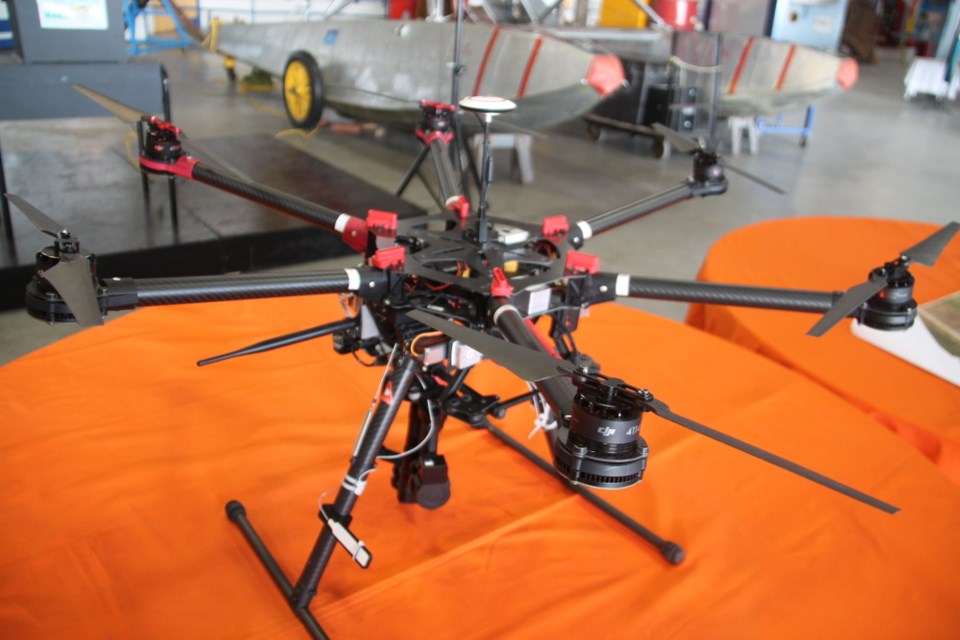There’s a new exhibition piece at the Canadian Bushplane Heritage Centre.
The Ministry of Natural Resources and Forestry’s Aviation, Forest Fire and Emergency Services (AFFES) branch handed over its first Unmanned Aerial System (it’s okay to call it ‘a drone,’ Ministry officials smiled) to the Bushplane Museum to put on display Monday.
Sault-based MNRF officials joined museum staff and volunteers for an official presentation ceremony which included the original DJI S900 drone on display alongside new models, brief speeches and a celebratory cake.
“Years from now my co-workers will bring their grandchildren here, walk up and tell them ‘you see that thing, that’s a UAS, and their grandchildren will say how could you even operate that?’” said Rick Dunning, AFFES director (based out of the MNRF offices in the Roberta Bondar building).
“Someday we’re going to look at that and wonder how on earth did we do the work we needed to do with that…this is our beginning (in drones),” Dunning said, as drone technology swiftly improves, the devices constantly getting smaller in size while becoming more efficient.
“I’m excited to see where we go from here,” Dunning told an audience gathered at the Bushplane Museum.
“It’s like the first Beaver aircraft the air service had, it’s that kind of parallel,” said Todd Fleet, Canadian Bushplane Heritage Centre curator.
“Technology has changed from the old aircraft to a UAS, or drone, so we’re trying to keep pace with their developments. The museum is a living place so we’ve got to keep adding new things, it keeps interest up for visitors, relevant to new technology.”
“The first drone looks like its right out of a robotics lab, first generation cutting edge when drones first came along, but the newer ones have weatherproofed housings, smaller, more efficient, easier to control, you can track things better with more camera options. You can see the evolution,” Fleet said.
“A lot of the newer ones have all-weather capability so we can fly them in minus 40 degree weather, snow and rain, additional safety measures like ‘return to home automatically’ if there’s a failure, longer battery life so they can fly for 40 minutes instead of seven to nine minutes,” explained Joe Eder, AFFES special projects coordinator.
“We brought in the DJI S900 in 2015 (very recent for ‘old’ technology, the evolution of drones being very rapid),” Dunning said.
Its first official mission was to survey damage done at the Gogoma train derailment site three years ago.
“It really boils down to a group of people sitting down and saying ‘we think we can make this work,’” Dunning said, Fleet adding drone evolution is akin to the evolution of water-bombing aircraft over the years.
“Now, without disturbing wildlife, we can take photos of turtles and other endangered species, fly away and take a lot of information,” Dunning said.
“We did the train derailment, monitoring the cleanup efforts, bird surveys, it’s been our workhorse for the past couple of years, but now, every six months there’s new drone technology coming out,” Eder said.
The AFFES currently has nine drones in service, Eder said.
Fleet said it is hoped further donations of drones will be made as time goes by to make a large collection for Bushplane Museum visitors to view.
